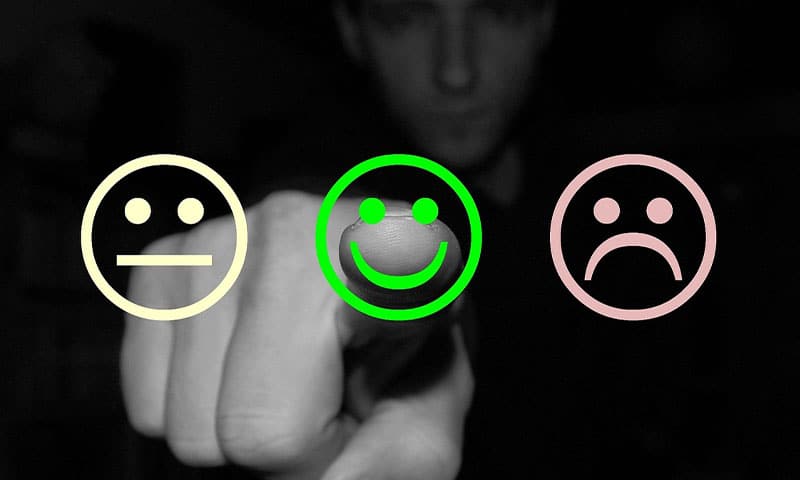The Mathematics of Customer Care

Empathy is an essential skill, especially in today’s volatile world. And when it’s applied to the bottom line of a business, it can support both short-term gratification and long-term relationships. Combine this with the desired longevity of your business, and you’ll see a direct link between how caring supports sustainability.
Let’s first talk about how this affects margins. Margins are the difference between the (gross) cost of doing business and your final (net) profit. Cost of doing business includes everything from materials, inventory, tax, labor (time), shipping and, of course, anything that involves customer care relative to returns, extra required materials, and communication. Leveraging margins is what will save you when things go wrong, especially when your margins are greater than your average bottom line, or desired net profit (DNP) as you will soon see.
When we (my wife Jen and I) began the Jadeion watch company, our intention was to have a net profit of at least 20%. This means that if I sold something for $100, I would have to make at least $20 net after everything (taxes, shipping, materials, etc.) were covered in order to sustain the company.
For example, If I had $50 into the build, and sold it for $100, then I would have $30 left over for marketing, taxes, etc, with $20 left over after it was all said and done as my net profit.
Now, if we sold a watch that made us 30% net profit, we would be 10% ahead of the game. In a purely logical sense, this means that I now have 10% room for including returns, repairs, extra shipping cost, etc, which can then be moved forward to sustain the company, i.e. to take care of the next customer and continue building watches.
Now, if we made 40% profit on a watch, we would then have 20% extra for greater sustainability. And, if that profit (from a single timepiece) remained entirely at our disposal (no refunds, returns or repairs), then the profit margin could then be carried over to the next build, which helps grow and sustain the company.
To be completely candid, after being in the watch business for several years now (and business in general for well over 30), my profit margins can be far greater than even 40% (even knowing I charge a flat rate) on a particular build depending on my sourcing of parts, or considering a shorter labor/client communication time for the build. But the point here isn’t to boast about income — building custom watches takes a lot more than just putting a timepiece together and spending money on parts — it’s to prove a point.
When my clients pay me, they are not only paying for a product that they can cherish and enjoy for years to come, but they are also paying for a kind of hidden insurance policy that guarantees that I will be in business and able to take care of them if something goes wrong with their beloved timepiece in the future. Or, if they should decide to upgrade their build at a later time for a discount of my services. Regardless of how you spin it, everyone needs to make a profit, and I am here to show you how you can use your profit to stay in business and continue to provide unparalleled customer service to your clients.
Note: This is why having a superior warranty and covenant policy (aka promise policy) can actually be an asset. Read on to learn more.
Since most of my work deals with people in general, I believe we can talk about why we are in business in the first place.
I call the formulation for my business gross economic and emotional income, or GEEI. This is what motivates us to run a good business and take care of our clients. Business is not just about accumulating wealth, it’s also about the emotional rewards that come from being aligned with our purpose and in control of our own comfort. In short, it’s the result or feeling of both accomplishment and happiness that drives us towards reaching our goals. And, since we’re being candid about our business ethics, it’s easy to see that it is those same emotions that drive our clients toward making a purchase with us in the first place. (See more details about Catalyst towards the end of this ebook)
With this in mind, take a look at the following equation.
Desired net profit (DNP) — again, at least 20% after all operating expenses (OE) — plus gross economic and emotional income (*GEEI), equal the acceptable threshold of business, or (ATB).
*GEEI, or gross emotional and economic income, includes the price of the sale and emotional payoff for the overall experience. It’s the feeling of accomplishment measured by the sale, customer satisfaction, validation, and personal gratification of our work.
**ATB, or Acceptable Threshold of Business, is simply your ability to withstand (except) the time and effort you put into the business and how it has emotionally supported (or became a detriment) to you, your business, and/or your family.
Here it is as an equation.
(DNP) – (OE) + (GEEI) = (ATB)
or
(Predicted Income) – (Expenses) + (Money in and Effort) = (The joy of doing business)
The equation shows us that emotional fulfillment plays the largest role, and that if the cost for it isn’t too high, then that emotion may be put aside in order to sustain a future by making sure all costs of business are settled and the customer is taken care of FIRST.
Here’s the rub; If you do business by this equation, even your worst day can become an asset towards your best.
To bring this home (and to simplify it) here’s a story about a Seiko SKX007 that came back to me with a bad movement beyond the return policy. This is where standing by your product, even when it fails, can be an absolute asset.
A few years ago, I sold a pre-owned Seiko SKX007 to a customer that I lightly modified with a new insert, hands and bracelet. It had its original 7S26 movement, which ran, but not great. I was told by the seller it had been gone through and serviced. After a few weeks, the customer reached out to tell me that the watch had stopped. I responded by making sure he was shaking it (to wind the automatic movement) as well as inspecting it to make sure the hands weren’t touching each other or the crystal, which would have been my fault, regardless.
After the client tried both options to no avail, I sent him a label (at my expense) and had him ship the watch back to me. Upon inspection, it turned out that the movement was simply bad beyond the point of repair. The only solution was to replace the movement, which could run anywhere from $80-$165 labor alone. Instead of pushing this unexpected cost upon the customer, I decided to replace the movement with a brand new NH36 (with the day wheel from the original 7S26 to match the 3:18 crown position), time-graph and adjust it for accuracy, add a new crown, and pressure test it as he is a diver.
The cost to my customer, including shipping back to him, was ZERO. I paid for everything. Although the watch was well over a decade old, to the customer it was brand new. And that’s what I set out to make it by replacing the movement.
To this day, that customer is no longer a customer, but one of my best clients. I have done countless builds for them, updated prior builds, and continue to design new and unique watches that we come up with together. And no, he’s not the only return customer. It goes without saying that every bit of warranty work that I do helps to build comfort and trust with working with me.
The moral of the story is that every repair or warranty issue is an opportunity to prove to your clientele who you are and what you stand for. There is absolutely NO OTHER marketing strategy better than providing a premium service, which almost always leads to a happy client telling their friends about you and your business.
Furthermore, all I had to do was earn a little more than my desired net profit (DNP) on a few builds to service this client in the way I did. Now, after years of client builds and watch sales, I treat ALL clients this way, especially if the issue was on my end, which goes without saying. Of course, I can’t just replace movements five years after a client buys and abuses a watch, but I can certainly do things at a higher standard than anyone else out there. This is what we should all set out to do.



